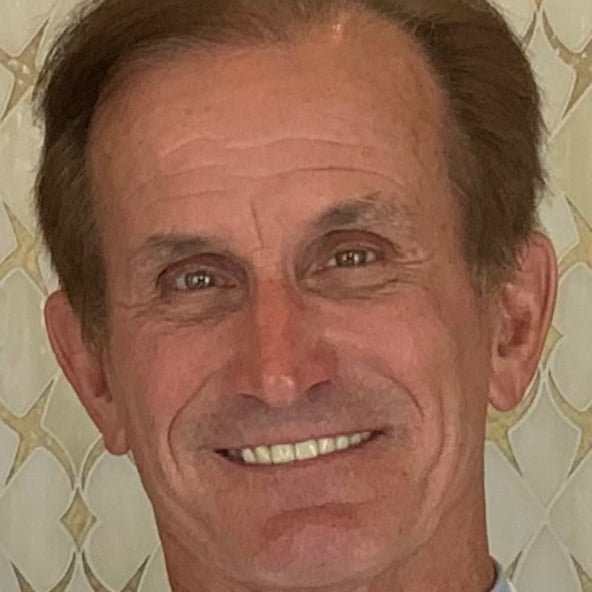
Updates from the Newsletter Editor and Secretary FECs Past, Present, and Potential
Lonnie Schwirtlich, MD

Freestanding Emergency Centers first started being licensed in Texas in 2009 after House Bill 1357 was passed. There had been some operating before then, but they were not regulated and not uniform in function. They were thought to have been created in order to address the F that health care got regarding access to emergency care. However, there were many reasons that they were started and that they are actually continuing to be built.
They definitely were created to address the overcrowding of the hospital emergency rooms that results in the long wait times which we know result in worse outcomes. The longer the wait for emergency care the worse the outcome (Golden Hour Concept, time is muscle, renal function, reversible brain injury, etc.). In addition to the increased suffering waiting for treatment, we know that these long wait times and crowding also exposes the waiting ER patients to all the infectious diseases around them as well as the nosocomial infections infesting the tertiary care centers and increases their chances of contracting them. Many of us in administrative positions realized that no matter how hard we tried to optimize these hospital-based EDs to decrease that time to treatment, we could only minimally increase efficiency a few percent, and that was if we could get hospital administration to effect change with their huge and bogged down administrative processes.
One or part of the solution is to increase access points and to put those access points closer to where patients live and develop their emergencies. Placing them in locations easier to access than huge, crowded hospital centers. The problem is that with the old model of hospital based EDs, the footprint is far too expensive to build and maintain to be able to solve this by building more hospitals. Many regular hospitals and critical access hospitals have found this out the hard way in expensive and damaging foreclosures. More ambulances in the community are not cost effective, as well, because it costs about a million or more per year to maintain each ambulance in a system and ambulances can’t go to every prudent layperson’s perceived emergency.
One of the biggest problems I was warned about when I mentioned to my preceptor in med school that I wanted to go into EM was that there was a huge problem with burn out in the EM field. I was told that the average time that docs stayed in EM was 8 years because of that. It still is a huge and significant problem that we discussed as one of the major topics at the last LAC conference in DC. This burnout is thought to be due to many factors. Some of the biggest in my experience of 43 years is frustration dealing with these huge wait times, the anger of the patients at you for this, and your minimal ability to control your work environment and change things to try and innovate due to the huge hospital administration quagmire. We would have meetings to plan meetings to get something altered or changed or attempt new processes and most of the time if it occurred at all it was much less effective and delayed because of the complexity of the administrative yoke. You had minimal chance to effect change and the frustration you felt burned you out. A physician cannot own a hospital that they work in because of the stark laws and most docs that step into totally administrative positions lose the continuous insight working actively gives you and secondarily lose track of how best to manage health care. Therefore, it is difficult to gain better controls to affect change by owning a hospital. The other thing that burned EM docs out is the fact you had to work more and more shifts to maintain an income equal to other practices where they received all of the revenue produced from their effort. Owning or part ownership of your own FEC alters or corrects that and does improve your business skills.
This novel innovation of health care, called the independent owned freestanding emergency center addresses many of these things.
It has a much smaller footprint so it can be put throughout the community in multiple locations increasing access for patients to get the care when it can do the most good and give best results.
It can decongest the hospital emergency centers, augmenting them, and making them more effective and less stressful to the hospital based staff. It can do this by transferring in only those patients that need to be admitted, straight to the appropriate department/floor or surgical suite and not further burdening the already overburdened Hospital based ED.
It admits less patients to crowded hospital beds because there is no incentive to admit as there is in a hospital based ED.
Its smaller footprint results in a lower overhead allowing it be able to survive better in areas of lower volumes but where the patients live, and resulting after effects, post emergency, are just as important as in more crowded suburban areas closer to the hospitals with respect to time, whether it’s due to distance or other factors like traffic congestion. Many times, these lives in these more rural or farming breadbasket communities are harder to replace and compensate for than the inner cities where the big hospitals complexes are. Example: Farmers in farming communities. Besides, how much is 6-10 lives saved or emergencies treated per day worth, long term. Note the phrase long term as it is a significant factor in this whole formula too.
It can replace the critical access hospital model in smaller communities where its smaller financial footprint allows it to survive better.
Because it increases access, it is able to see the patients earlier in the disease process, when the treatment is less costly, more effective, and results in less disability downstream further saving health care dollars and increasing functionality of the patient afterwards.
EM docs are mandated to be in each facility 24/7/365 and because of this, they are able to see the patients earlier in the process and fine tune the ordering of tests. This is in contrast to the performing of triage protocols with its wastefulness of extra tests caused by this practice in large backed up emergency rooms. This further saves health care dollars.
Because the patients are seen quicker and not in crowded hospital based emergency department waiting room the patients have less chance of catching adjacent infectious diseases or the nosocomial infections of those large facilities resulting in less complicated recoveries and dollars saved.
It can reduce burnout drastically because of the EM docs employed by it or owning it have more direct control over its functioning, reducing that frustration of inability to affect or control your environment. The EM docs can capture more of the health care dollars the EM doc produces allowing these EM docs to able to work more reasonable schedules and have more family and relaxation time.
Let’s dispel some of the myths.
- The presence of increased access increases utilization and secondarily, costs. There are multiple studies that show that despite the increased access of most of the FECs being in Texas, it hasn't resulted in increased utilization. These studies (Dobson and Davanzo authored studies) can be found in the TAFEC/NAFEC social media sites online and in a study reported by Robin Gelburd of Fair Health in the 2019 Texas State of Reform Health Policy Conference in Austin. She showed that despite the population increasing about 5% faster in Texas vs the rest of the nation between 2009 and 2018, and every other health care field studied increasing in usage more than the rest of the nation as expected (primary care, urgent care, ACS, and behavioral care), Emergency Care Usage in Texas increased less vs the rest of the nation (225% for Texas vs 280% for rest of nation). Of significance of this period of time is that this was the first 10 years of FECs in Texas when there were almost none in the rest of the nation. What is that due to? I propose that it was simple medicine 101, basic golden hour rational that because the people of Texas had better access than the rest of the nation, their emergencies were being taken care of earlier than the rest of the nation resulting in less morbidity and complications downstream and less need for emergency care.
- That FECs are more expensive than hospital based EDs. Multiple studies have been done by Dobson and Divanzo group, which are again available on the TAFEC/NAFEC sites, which show for matched acuity and disease process, FECs saw the pts for about 22% less than hospitals and admitted 22% less.
- That FECs see mostly urgent care problems and charge them Emergency prices. Multiple studies show that FECs see less than 10 percent billing acuity levels 1-2, which are urgent care problems. How many hospital-based EDs, with their fast tracks, can claim they see less than 10% nonemergent problems?
Where are FECs potential for the future?
Pass the "Emergency Care Improvement Act” introduced by Congressman Jodie Arrington and others that allows equal access for Medicare, Medicaid, and Tricare patients to FECs by including FECs in the reimbursement roles of CMS. At the present time CMS does not reimburse FECs for Medicare, Medicaid, Tricare patients despite the fact that EMTALA rules are adhered to by FECs, and every emergency has to be treated regardless of their ability to pay. During the pandemic emergency period, there was a temporary waiver given to pay FECs for CMS patients, but that ended on May 11, 2023, and most of the FECs that were seeing CMS patients are continuing to see these patients with no reimbursement. This is because these elderly and military heroes have come to depend on them, and they don’t want to pull the rug out from under them if they can manage to stay afloat until the bill passes. They are hoping this bill will pass and retroactively reimburse them for this much needed care. It is of note that the ECI act stipulates that FECs will see level 1 and level 2 billing code patients for professional fee only to dispel the fear that FECs will be seeing urgent care patients and charging them Emergency room prices. Note that the only reason FECs are not included in CMS reimbursement is that they were first licensed in 2009 and the affordable care act that designates who are reimbursed by CMS was passed in 2008. The bill simply adds to the statement in the ACA that "Emergency care is that care provided in the four walls of a hospital designated for emergency care" the phrase "or in a state licensed facility licensed to practice Emergency Medicine".
FECs start taking EMS traffic and further take some of the burden off of hospital based EDs. Passing the ECI act will also allow ambulance traffic to come to FECs. The primary reason ambulances don't bring EMS traffic to FECs is that they will not get reimbursed by CMS if they bring a CMS eligible patient to a non-CMS recognized facility.
Spread licensing and recognition of FECs with mandatory 24/7/365 EM docs in all of the states so that all states can realize this innovation of health care access with its effect seen in Texas between 2009 and 2018 of decreasing their EM utilization by secondary better health afterward and saving even more health care dollars throughout the United States.
FECs in most small towns are giving equal treatment of all emergencies as ATLS training did for trauma emergencies.
Use of the FECs ancillary medical equipment (lab, CT, and ultrasound) in small towns as outpatient services for local small town primary care docs so they can get their studies done locally. This would allow them to get the results back quicker to initiate appropriate treatment faster to avoid further worsening of the investigated disease process. This is more likely to happen when they have to travel long distances and wait longer periods of time for the results that occur when sending into the large town radiology and lab facilities for outpatient workups.
Pair FECs with a robust observation program and in home telemedicine convalescent treatment and monitoring program that keeps patients out of the crowded overburdened hospital beds for lesser illnesses by treating them aggressively in the FEC and then further treatment in the home with modern Wi-Fi monitory systems and home health NPs checks. Continuing needed treatment such as IV antibiotics and infusions in the home where they sleep better, rest better, get exposed to nosocomial infections less and heal better for less cost.
Address and solve the common sense contradictory statements that there will be an overabundance of EM doctors by 2030 by the staffing needed for the increased access sites of the FECs in all or most smaller communities all over the US.
The FEC model has tremendous potential to expand Emergency Care in a fashion that will provide more control of their environment by the EM docs working in them but also to address a shortage of access to emergency care that results in increased morbidity and decreased survival rates especially in more remote locations where the population is able to be replaced yet are very essential to our culture and survival. It can provide a nicer small town lifestyle to the EM docs that would decide to live and practice in these smaller towns or less covered areas of larger suburban communities. The amazing thing is that they can do this along with providing better, healthier patients downstream, less suffering, and for costs savings rather than increase. Win-Win-Win



